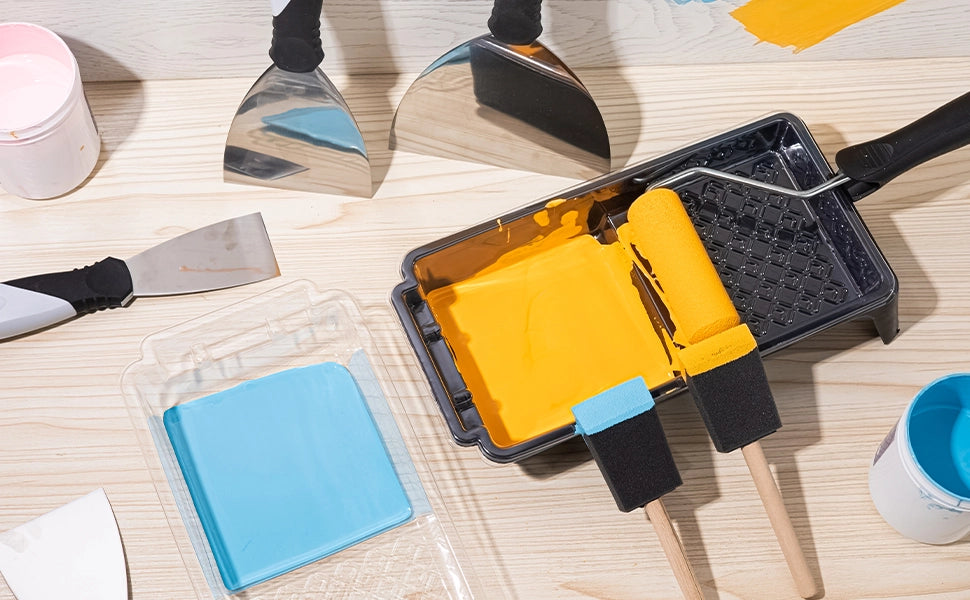Getting spray paint on your skin can be an uncomfortable and concerning situation. Whether you're working on a DIY project, painting, or accidentally came into contact with it, removing spray paint from your skin requires care to avoid irritation or damage. In this guide, we'll walk you through proven methods to safely and effectively remove spray paint from your skin, ensuring you minimize potential harm.
1. Assess the Situation
Before attempting to remove spray paint, assess the situation:
- Check for irritation: If your skin is red, itching, or burning, stop immediately and seek medical attention.
- Identify the paint type: Oil-based, acrylic, or enamel paints may require different removal techniques.
- Clean gently: Avoid scrubbing, as it can worsen irritation or spread the paint.
2. Immediate First Steps
Start with these simple steps to break down the paint and prepare your skin for removal:
Cold Water Rinse
- Run cool water over the affected area to rinse away excess paint.
- Avoid hot water, as it can soften the paint and make it harder to remove.
Soap and Water
- Use a gentle soap or detergent to help lift the paint.
- Gently massage the area to loosen the paint without scrubbing.
3. Effective Removal Methods
Method 1: Mild Solvents
Solvents can help dissolve the paint without damaging your skin.
- Isopropyl Alcohol (Rubbing Alcohol): Dab a small amount on a cotton ball and gently wipe the area. Avoid applying directly to open wounds.
- Baby Oil or Mineral Oil: These oils can soften the paint, making it easier to wipe away. Use a soft cloth to gently rub the area.
Method 2: Baking Soda Paste
Baking soda is a natural exfoliant that can help lift the paint.
- Mix baking soda with water to form a thick paste.
- Apply the paste to the affected area and let it sit for 10-15 minutes.
- Gently scrub with a soft cloth or brush, then rinse with cool water.
Method 3: Olive Oil or Coconut Oil
Natural oils can help break down the paint and soothe your skin.
- Apply a generous amount of olive oil or coconut oil to the affected area.
- Let it sit for 10-15 minutes to soften the paint.
- Gently scrub with a soft cloth and rinse with cool water.
Method 4: Commercial Paint Removers
For stubborn cases, consider using a commercial paint remover designed for the skin.
- Look for products labeled "skin-safe" or "gentle for sensitive skin."
- Follow the instructions carefully and wear gloves if necessary.
Method 5: Toothpaste
Toothpaste contains mild abrasives that can help remove small paint spots.
- Apply a small amount of toothpaste to the area.
- Gently rub in circular motions and rinse with cool water.
4. Preventing Skin Irritation
When removing spray paint, it's essential to protect your skin:
- Avoid harsh chemicals like acetone (found in nail polish remover) unless absolutely necessary.
- Test any product on a small area first to ensure it doesn't cause irritation.
- Moisturize your skin afterward to restore its natural barrier.
5. When to Seek Help
If the paint is causing severe irritation, redness, or blistering, or if it's in your eyes, mouth, or on sensitive areas like your face or genitals, seek medical attention immediately.
6. Tips for Future Projects
Prevent spray paint from getting on your skin by:
- Wearing protective gear, such as gloves, long sleeves, and goggles.
- Working in a well-ventilated area.
- Applying a protective barrier, like petroleum jelly, to exposed skin.
Conclusion
Removing spray paint from your skin doesn't have to be a stressful experience. By using gentle, effective methods and prioritizing your skin's health, you can safely eliminate the paint and prevent irritation. Remember, prevention is key—always take precautions when working with spray paint to avoid future mishaps.



0 comments